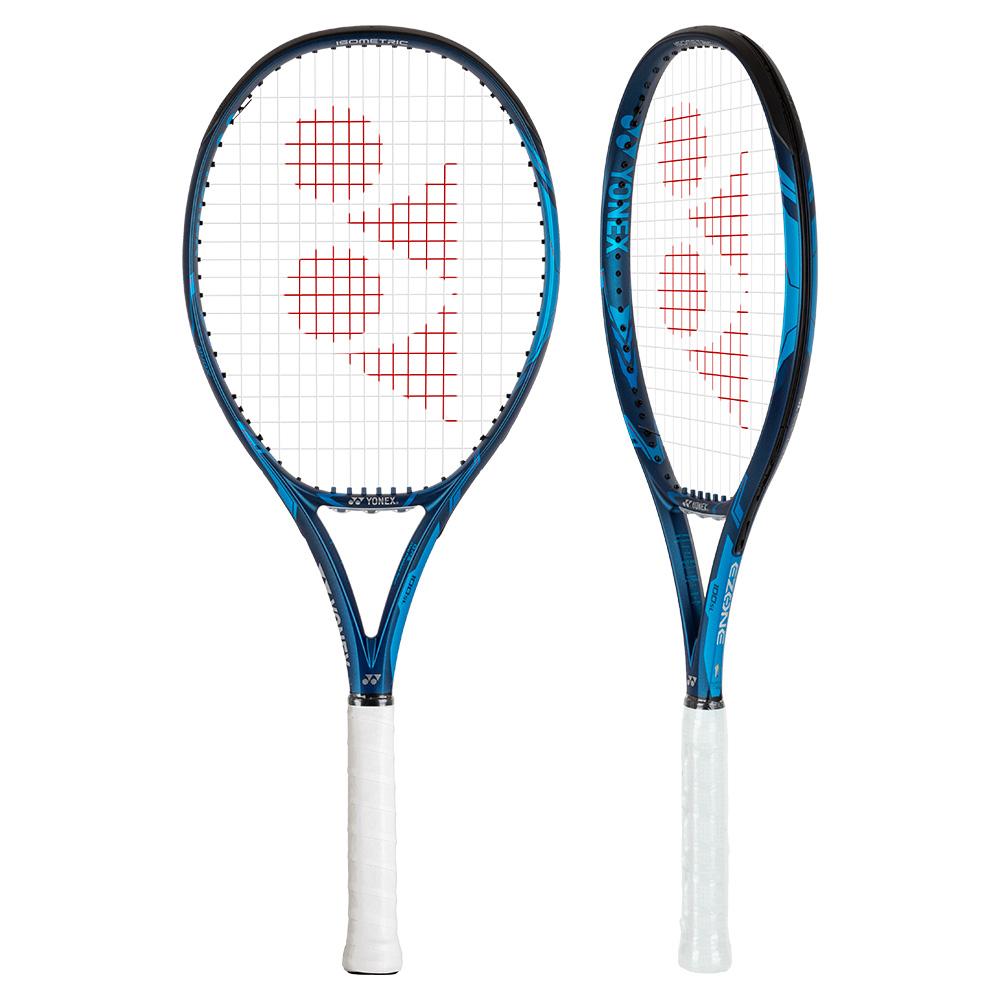Racquet Specs |
|

Intro
Yonex has lightweight racquet fans in mind with the introduction of the new Ezone 100SL. This super light version of the Ezone 100 brings together all of Yonex new technology into the lightest 100 inch model in the lineup. A new graphite called M40X is employed in the throat. This more flexible material provides enhanced flex while retaining the stability that has become an Ezone hallmark. Much like its Ezone siblings, the 100SL also takes advantage of Vibration Dampening Mesh (VDM) in the handle. This material allows for increased shock absorption without robbing the frame of its feel. Liner Tech grommets return to provide better string to frame performance and string bed responsiveness. Having enjoyed my time with the other new Ezones, I was curious how the super light 100SL model would perform.
Groundstrokes
The 100SL produced easy power from the baseline through a combination of beam design and raw swing speed. The firm 23.5/26/22 mm beam provided ample energy return on groundstrokes. Weighing just 10 oz strung, I was able to really amp up my swing speed for pace off the ground. The 100SL definitely lacked the court penetration of heavier models and my opponents weren’t as bothered by the pace alone. The 100SL would be a better weapon for juniors and developing players who don’t have the mechanics or strength yet to handle more mass. The frame was close to even balance which gave it a bit of extra pop from either wing. The low weight also made it a little harder to keep balls from sailing. I felt like there wasn’t enough inertia behind the ball to pull it back down and I sailed plenty of balls when I wasn’t careful. In a slight deviation, the 100SL employed a 16 x 18 pattern. This provided plenty of access to spin, which I needed in order to keep the ball from sailing long. I did enjoy the easy margin I could play with on my backhand, which tends to be flatter and lower trajectory. The 100SL was accurate enough for its class and it was most successful when I chose big targets to hit to. Stability was on par given it’s weight and the extra weight in the head definitely helped in this regard.
Volleys & Serves
The Ezone 100SL was all about attacking quickly at the net. The easy power and lightning fast response allowed me to play really aggressively in the front of the court. This was a necessity because as exchanges wore on, players were more likely to exploit the frame’s lack of mass and stability. Accuracy wasn’t a major strong point for the 100SL, but I was fine as long as I picked safe targets and committed to them. The frame was stable enough for lower pace balls, but the reduced mass had trouble with anything hit heavy. Feel was solid at net and I enjoyed the softer response over the outgoing model. I was able to mix in more touch volleys and use the added flex in the throat to my benefit to bleed some pace off of incoming balls.
On serve the 100SL really wanted me to utilize its overall speed. The low weight allowed me to accelerate through the top of my motion and hit solid pace without much physical effort. My first serve had consistent speed to it, although it lacked the heaviness of serves with models that had more mass behind them. I did not expect the 100SL to be laser guided on serve, but I did find good success focusing on hitting the outer half of the service boxes. Second serve became a kick serve lesson. The easy speed and open string pattern allowed me to bounce the ball up off the court with ease. There wasn’t weight for me to feel like a slice serve was truly dangerous so I primarily used the kick serve to at least get points started in neutral when I had to hit a second serve.
Feel & Comfort
Across the board, Yonex has done a great job improving the feel of the new Ezone line. The 100SL had the same improved hoop feel as the other models. While not as plush as the DR generation, it had much better feel high in the string bed and a more uniform response across the string bed. There was a little vagueness in the feedback at times but overall I appreciated the level of dampening the combination of VDM and M40X provided. Given its weight, the 100SL played comfortably, with a crisp, yet comfortable response. It should play well with a variety of strings and tensions although its target player base likely should be using a softer string set up anyway.
Overall
Yonex is out to recapture some of the magic of previous Ezone generations and the 100SL aims to do so for fans of the lightest weight options. It packs easy speed and power, with ample feel and enough control to play from anywhere. Developing players seeking easy power in a frame that is fast to maneuver and more forgiving than most should enjoy the Yonex Ezone 100SL.
About the Reviewer: Matt Locke formerly served for 3 years as the Junior Programs & Development Coordinator for USTA-Idaho. He is a PTR certified coach and is an active USTA 4.5 League and Tournament player.



